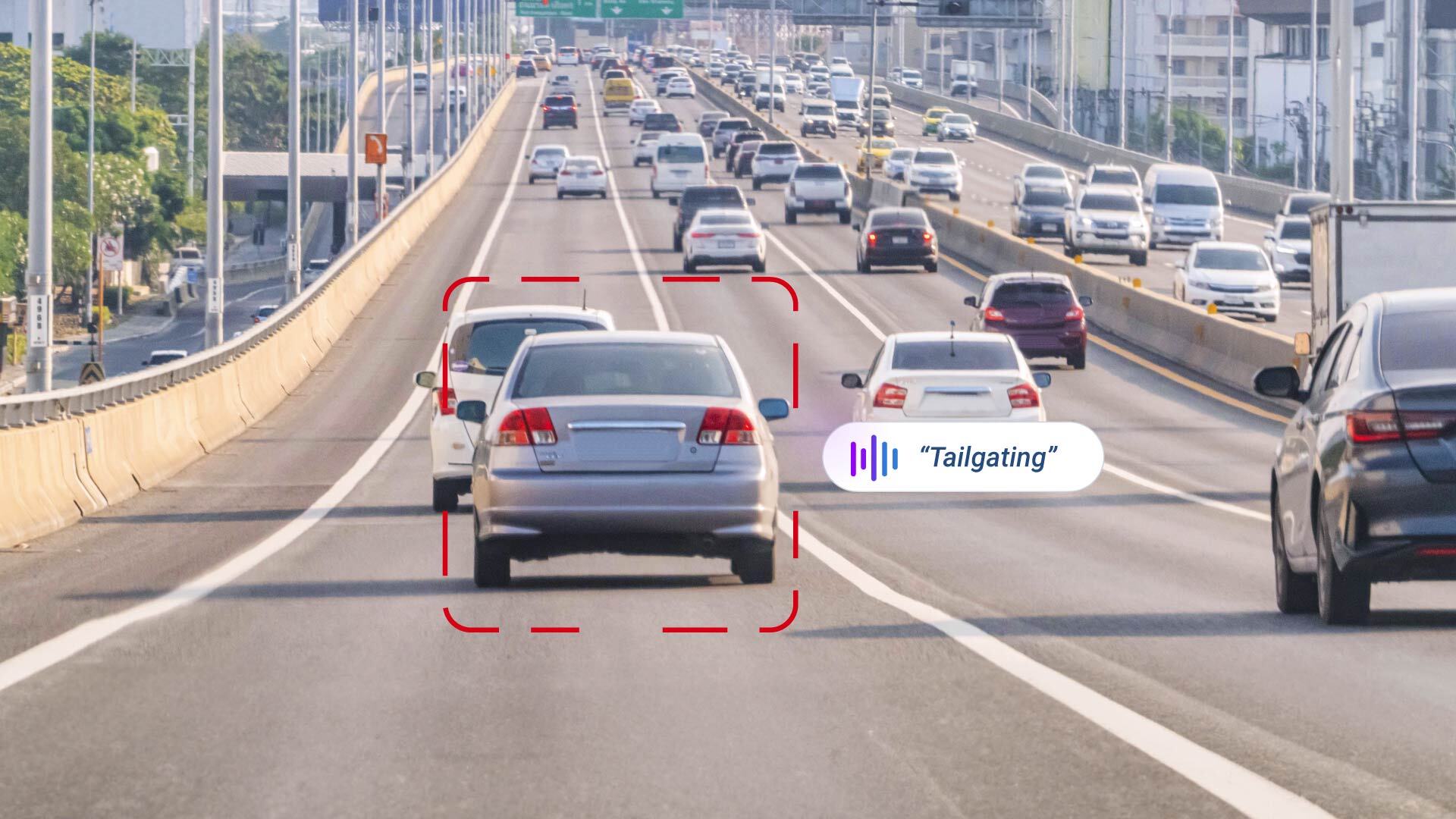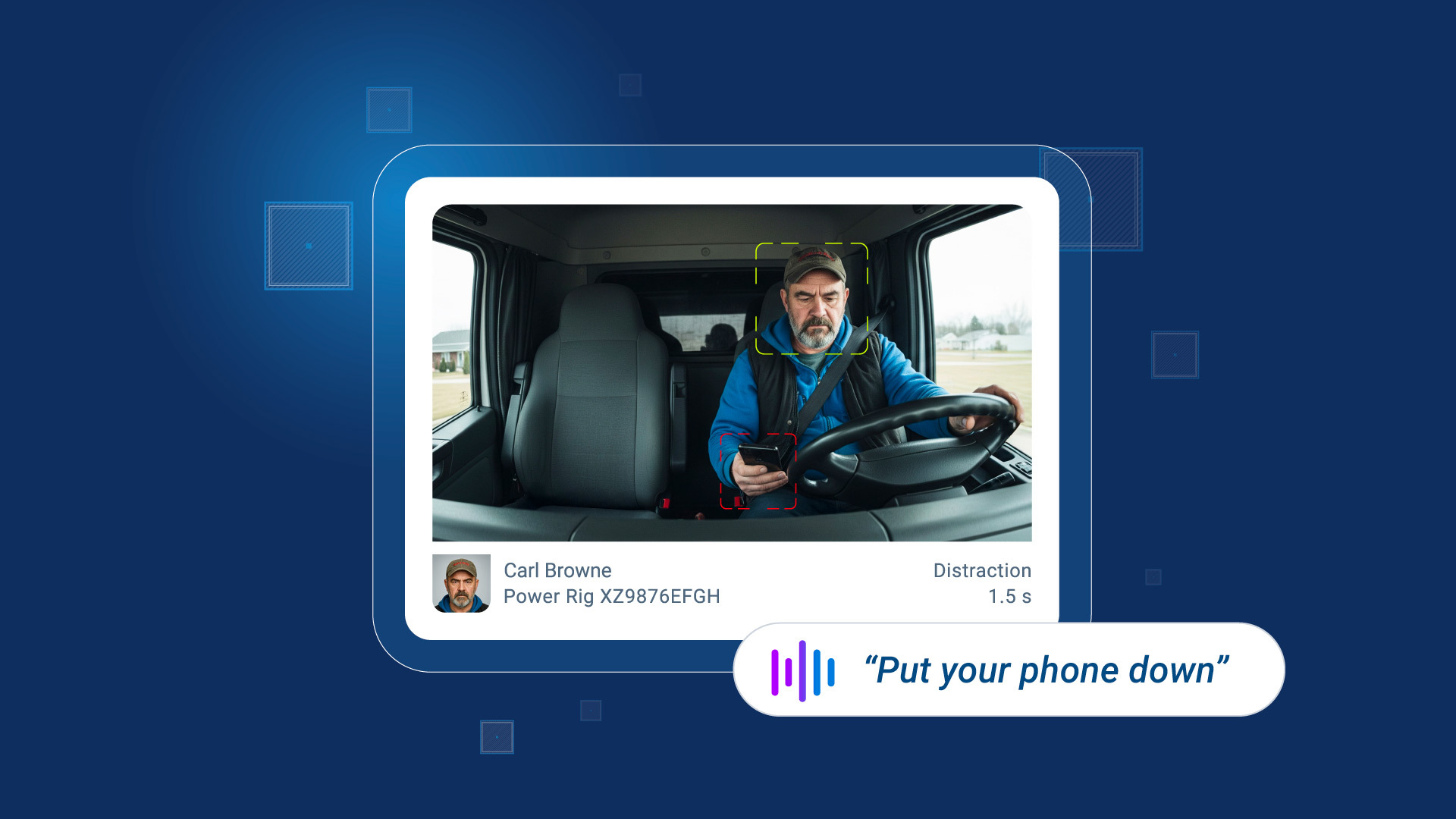Improving road safety with technology innovation
Read about some new tech innovations that are improving road safety, including smart traffic systems and glow-in-the-dark paint.
By Geotab Team
Dec 27, 2023

The automobile has been around for little more than a century and during this period, it has gone through an extraordinary evolution, driven by constant technological innovations. However, other aspects of transportation, extravehicular safety, signage, and traffic control infrastructure have seen a much slower pace of development.
Some of the technology on and around roads has not seen the level of innovation demonstrated by the automobile itself. Examples of such technology include:
- Road Marks (introduced 1910s)
- Traffic Lights (1910-1920s)
- Traffic Signs (1910s)
- Cat’s Eyes and Bott’s Dots (1930s)
- Retroreflective sign paints (1939)
During the last few years, a significant level of innovation has led to improvements in road safety. Along with fleet safety technology, we will see some of these newer innovations become common in the next few years.
See Also: 7 Smart City Solutions to Reduce Traffic Congestion
Reinventing the Traffic Light
Automated three color traffic lights have been around since the 1920s. They are usually round in shape, since incandescent round bulbs were used at their center.
A recent technological improvement has been the switch from incandescent bulbs to LEDs. Although costlier in the short run, LED traffic lights have several advantages:
- More energy efficient (up to 98%).
- Low power consumption allows for battery backup in case of power outage. This improves safety and traffic flow during power outages.
- Very long life (5 to 10 years) as opposed to 1 year for incandescent. Maintenance cost savings.
- They do not just burn out, they slowly lose intensity. No down time due to burnt bulbs.
- No need for rear reflector. Eliminates the problem of false showing due to sunlight entering and being reflected back.
- Much brighter than incandescent, makes them easier to see in daylight and through rain and snow.
- The green light can be used for both left turn signal and straight through traffic (by selectively turning on some LEDs and then all of them). This allows for easy and cost-effective deployment of the left turn signal — a benefit for intersections that would otherwise not have justified the extra cost.
Square Traffic Lights
The use of LEDs allow for different shapes other than circular ones. Square fields, for example, can increase visibility due to the larger illuminated area.
Countdown Traffic Lights
Let’s face it, nobody likes waiting. It can be extremely irritating when waiting for a traffic light to change, especially when you need to get somewhere. Those few seconds with nothing to concentrate on seem to drag on forever.
Countdown traffic lights have started to make their appearance in several countries. The idea is pretty simple; give drivers a visual cue of how much longer they have to wait with a countdown or how much time they have to get to the intersection before the green turns to amber and red.
.jpg)
For a red light, it is easy to see how this feedback can provide the driver with something to concentrate on by providing an indication of when the wait will be over. For the green light, it can provide drivers with information to adjust their speed. With plenty of time left, there is no need to slow down. With little time left, maybe it is time to start slowing down.
A 2016 study by Oregon State University of 55 drivers found that countdown timers increased the likeliness that drivers would slow down and stop in what they called the “dilemma zone” — the last 10 seconds of a green light.
However, just as there are pros with the countdown on red (less anxious drivers and less road rage), there is some fear that the countdown on green may lead to drivers speeding up to beat the light. Drivers may also pay too much attention to the counter and less to the road.
In the U.S., Audi has introduced a vehicle-to-infrastructure (V2I) system in their vehicles, named Traffic Light Information, so that drivers can see a red light countdown on the vehicle dash.
Other Bright Ideas
Traffic lights could provide information besides stop and go, like the recommended speed limit (which could change dynamically), road conditions ahead, and more.
IBM has filed a patent for a smart traffic light system that uses artificial intelligence to analyze traffic in real-time and make adjustments to keep things flowing. If too many cars are backed up at a red light, it can adjust the traffic light sequence accordingly. This would of course require interaction between the vehicle and the traffic light control system. This first requires a standard communication method that manufacturers have to follow. The idea of a vehicle being controlled by somebody else may not be acceptable to many and is also controversial.
Today’s technology opens the door to many possibilities when it comes to traffic lights. Which ones will make it to actual usage… only time will tell.
Lighting Up the Path
For many years, road illumination and cat’s eyes have been the standard method for seeing ahead in the dark; the idea being to give drivers an idea of where the road is taking them. The cat’s eye is a reflective road marker invented in 1933 and often placed along the center of the road or the shoulder to help guide drivers at night or in fog.
Street illumination is costly and only practical in populated areas, where they serve other purposes, besides aiding motorists. Cat’s eyes are more common outside of cities where it is not practical to have illumination.
.jpg)
A Dutch consortium has come up with glow-in-the-dark road paint. It absorbs solar energy during the day and then glows at night. It makes the direction of the road ahead clearly visible at night without any other infrastructure or the use of power. Calgary, Alberta is considering luminescent paint as a cost-effective way to light roads outside the city.
Another innovation by the same consortium involves “dynamic paint.” This is paint that changes color depending on road conditions. Sections of road that are prone to icing could be painted with a warning. This way, the warning only becomes visible when the road’s surface temperature reaches a certain point.
SolarLite is a cat’s eye alternative built by a Clearview Intelligence. It is a rechargeable battery powered LED that is embedded on the road much the same way as cat’s eyes. The manufacturer claims lower cost and longer life than traditional cat’s eyes. However, unlike cat’s eyes (which are considered passive), solarlite is active. Cat’s eyes reflect a vehicle’s headlamps light back toward the driver. But this only works at a narrow angle and only for as far as the headlamps can reach (usually 90m). Because Solarlite gives soft light from its own energy source, it can illuminate the path ahead beyond the reach of headlamps and at more angles, thus informing the driver of the road path much further ahead. This provides the driver with more advanced information regarding required adjustments.
For areas with higher population and traffic, where public illumination is used, there is an effort to try to have “lights on demand” (also referred to as “smart lighting”) or interactive lighting. The intention is to provide illumination in the immediate path of cars and pedestrians, and dim or turn off the lights in their absence. There are several developments that use sensors to detect the presence of cars and pedestrians. Turning off lights while not in use may not appear to contribute to safety on the surface. However, the decreased long term cost of interactive lighting compared to continuous lighting (electricity and maintenance) could make the deployment of more illumination feasible, especially in areas that would otherwise not get illuminated.
Another safety advantage from smart illumination includes bright lighting in the vicinity of a driver or pedestrian that clearly indicates the presence of someone else where it would otherwise be dim.
Smart Traffic Control
Real time traffic management strategies have the potential to improve traffic by making better use of existing infrastructure.
Local Smart Traffic Control
In its simplest form, local smart traffic control refers to detecting vehicles at intersections between major and minor streets where the presence of vehicles on the minor street will trigger a red light on the major street. In the absence of vehicles, the major street gets an uninterrupted green. This saves time and fuel for drivers.
.jpg)
Wide Area Smart Traffic Control
These are new initiatives being deployed in some areas. The idea is to constantly adapt traffic lights and speed limits based on traffic patterns detected beforehand with the intention to keep traffic flowing as efficiently as possible. One example currently being tried is Surtrac (Scalable Urban Traffic Control), and it is being tested in some areas of Pittsburgh. Smart traffic control relies on sensors, cameras, remotely controlled signs and traffic lights, as well as traffic management centers that collect information and make decisions to adapt the light and traffic signs.
Where Telematics Fits In
There is a lot of talk about connecting vehicles to the cloud. As more fleets adopt telematics, information regarding a vehicle’s location and speed could be used for smart lighting systems and smart traffic control more efficiently than by collecting information through sensors. Big data analysis and machine learning algorithms could empower smart traffic control systems to better manage traffic in busy cities, improving flow, safety, and reducing gridlock.
However, there are also concerns that come with such a widespread use of telematics. The number one concern that must be addressed is that of privacy. Making a vehicle’s location known and available for a city wide smart traffic control to use has privacy and possibly legal concerns. Visit our website to find out what is new in the area of Telematics and how we are contributing to the future of smart transportation.
For more news on smart cities and fleet innovation, subscribe to the Geotab newsletter.
Related:
Predicting Traffic Congestion with Driving Behavior
How Autonomous Driving Will Change Our Highways and Cities
Subscribe to get industry tips and insights
The Geotab Team write about company news.
Table of Contents
Subscribe to get industry tips and insights
Related posts
.jpg)
.png)
AI dash cams vs. traditional: Which delivers better fleet safety?
December 8, 2025
5 minute read

Elevating Worker Safety Through Simplicity: The OK Alone Story
December 3, 2025
2 minute read

Geotab GO Focus Plus Camera Rules, Thresholds, and Event Buffers Explained
October 27, 2025
2 minute read

How AI dash cams help fleets tackle distracted driving and reduce collisions
October 23, 2025
4 minute read

How Geotab’s Predictive Safety Model helps fleets prevent collisions before they happen
October 17, 2025
2 minute read